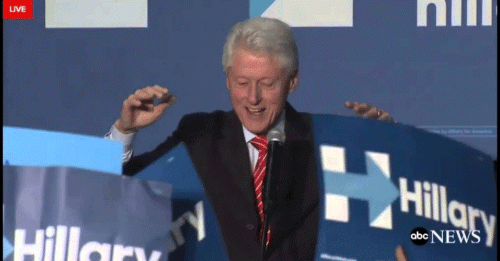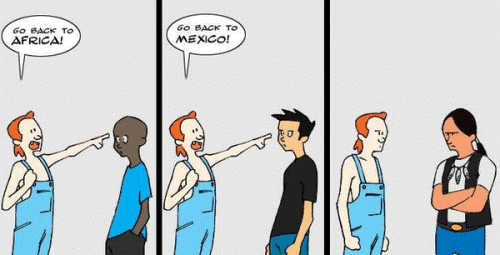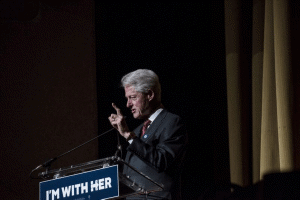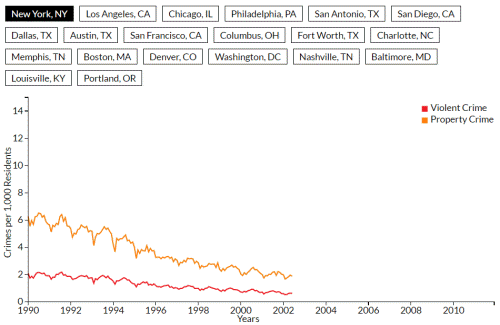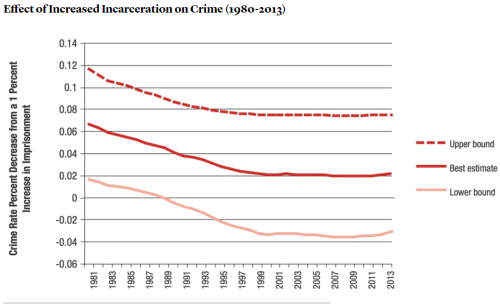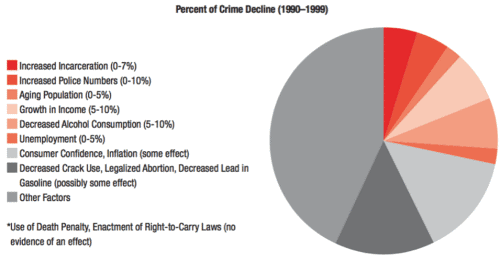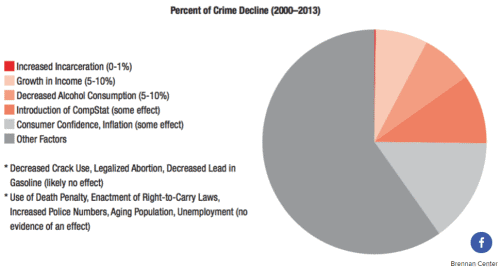Chapter 1: Superpredators and other Myths about Juvenile Delinquencyby James C. Howell
In: Preventing and Reducing Juvenile Delinquency: A Comprehensive Framework
DOI:
http://dx.doi.org/10.4135/9781452274980.n11992
NOTICE: THIS WORK MAY BE PROTECTED BY COPYRIGHTYOU ARE REQUIRED TO READ
THE COPYRIGHT NOTICE AT THIS LINK BEFORE YOU READ THE FOLLOWING WORK, THAT IS AVAILABLE SOLELY FOR PRIVATE STUDY, SCHOLARSHIP OR RESEARCH PURSUANT TO 17 U.S.C. SECTION 107 AND 108. IN THE EVENT THAT THE LIBRARY DETERMINES THAT UNLAWFUL COPYING OF THIS WORK HAS OCCURRED, THE LIBRARY HAS THE RIGHT TO BLOCK THE I.P. ADDRESS AT WHICH THE UNLAWFUL COPYING APPEARED TO HAVE OCCURRED. THANK YOU FOR RESPECTING THE RIGHTS OF COPYRIGHT OWNERS.
CHAPTER 1: Superpredators and Other Myths About Juvenile DelinquencyThe juvenile justice field is littered with myths, for no apparent reason. This chapter explores key myths that have been promoted recently. First, what is a myth? Bernard (1992) describes myths as “beliefs about the past that are strongly held and convenient to believe but are based on little actual information. Myths are not necessarily false—people generally just don’t know or care whether they are true or false. They hold the belief because it is convenient to do so” (p. 11) (“In Focus” Box 1.1).We begin this chapter by focusing on the most bizarre myth ever perpetrated about juvenile delinquency—the “superpredator”—after which other popular myths are discussed.
IN FOCUS 1.1: Myths About Juvenile Delinquency
The following are some common myths about juvenile delinquency (Bernard, 1992, p. 12):
• The myth of progress: Delinquency in the past was much more serious than it is today. Few people believe this myth; rather, they fear that if they let their guard down, delinquency will get worse.
• The myth that nothing changes: Delinquency in the past was about the same as it is today. More people believe this myth than believe the first one. It is supported by the view that delinquency is part and parcel of human nature—“boys will be boys.”
• The myth of the good old days: Delinquency in the past was much less serious than it is today. More people probably believe this myth than believe the first and second ones combined. This myth is true some of the time and false at other times. The view that delinquency was better controlled at one time implies that simple solutions (quick fixes) should solve the problems associated with juvenile delinquency today.
The Juvenile Superpredator MythA professor of politics and public affairs on the political science faculty at Princeton University, John DiIulio, created and popularized the superpredator concept. He coined the term superpredator (1995b) to call public attention to what he characterized as a “new breed” of offenders, “kids that have absolutely no respect for human life and no sense of the future. . . . These are stone-cold predators!” (p. 23). Elsewhere, DiIulio and co-authors have described these young people as “fatherless, Godless, and jobless” and as “radically impulsive, brutally remorseless youngsters, including ever more teenage boys, who murder, assault, rob, burglarize, deal deadly drugs, join gun-toting gangs, and create serious disorders” (Bennett, DiIulio, & Walters, 1996, p. 27).
The superpredator myth gained further popularity when it was linked to forecasts by James Q. Wilson and John DiIulio of increased levels of juvenile violence. Wilson (1995) asserted that “by the end of [the past] decade [i.e., by 2000] there will be a million more people between the ages of 14 and 17 than there are now. . . . Six percent of them will become high rate, repeat offenders—thirty thousand more young muggers, killers and thieves than we have now. Get ready” (p. 507). DiIulio (1995a, p. 15) made the same prediction. Media portrayals of juvenile superpredators have created the impression that juveniles are most likely to be armed—heavily armed—and to use guns in attacks.
A year later, DiIulio (1996a) pushed the horizon back 10 years and raised the ante, projecting that “by the year 2010, there will be approximately 270,000 more juvenile super-predators on the streets than there were in 1990” (p. 1). DiIulio based his projection of 270,000 on two factors. First, he assumed that the 6% figure that the Philadelphia Birth Cohort Study found in relation to Philadelphia boys who were chronic offenders in the 1960s would remain constant. Second, he factored this figure in with projections of the growth of the juvenile population made by the U.S. Bureau of the Census. According to these projections, the ages 0–17 population group in the United States was expected to grow by 14% (4.5 million) between 1996 and 2010 (Box 1.2).DiIulio (1996b) warned that juvenile superpredators would be “flooding the nation’s streets,” coming “at us in waves over the next 20 years. . . . Time is running out” (p. 25). He also used inflammatory language, warning, “We must therefore be prepared to contain the [‘crime bomb’] explosion’s force and limit its damage” (DiIulio, 1995a, p. 15). However, he expressed hopelessness, saying, “This crime bomb probably cannot be defused,” and asserting that the superpredators would be here within 5 years (i.e., by the year 2000) (p. 15). They never arrived.
Two other criminologists contributed to DiIulio’s exaggeration. Speaking at a meeting of the American Association for the Advancement of Science, Fox warned of a “bloodbath” of teen violence (quoted in Associated Press, 1996). He also warned elsewhere of a juvenile “crime wave storm” (Fox, 1996a). In a report to the U.S. attorney general, Fox (1996b) said, “Our nation faces a future juvenile violence problem that may make today’s epidemic pale in comparison” (p. 3). He called attention in particular to the projected growth in the black teenage population (ages 14–17), which would increase 26% by 2005. He also issued a warning: “There is, however, still time to stem the tide, and to avert the coming wave of teen violence. But time is of the essence” (p. i).Blumstein’s (1995a, 1995b, 1996) analysis showed that the homicide rates among juveniles, the numbers of gun homicides, and the arrest rates of nonwhite juveniles for drug offenses all doubled in the late 1980s and early 1990s, and he tied these three findings together around
the “crack cocaine epidemic” of that era (Campbell & Reeves, 1994; Hartman & Golub, 1999). Blumstein contended that youngsters who joined the illicit drug industry felt it necessary to carry guns for self-protection from other armed juvenile drug sellers, and that the spread of guns among adolescents and young adults led to violent crimes and growth in the homicide rate among these age groups. It is interesting to note that in Canada, juvenile homicide rates increased sharply in the mid- to late 1980s without the presence of any crack cocaine epidemic (Hagan & Foster, 2000).
Blumstein also feared that the youth violence epidemic would continue with the growth of the young population and warned that “children who are now younger (about ages 5 to 15) represent the future problem” (Blumstein, 1996, p. 2; see also Blumstein & Rosenfeld, 1999, pp. 161–162).
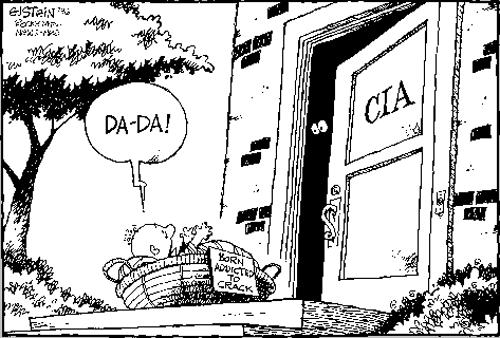
[Baby Born Addicted to Crack] DA-DA!
[Da-Da] CIA
Already, people associated with the case were beginning to die in what amounted to a reign of terror among young people in Alexander, Arkansas.
Keith Coney, who told his mother he knew too much about the railway deaths and feared for his life, died in a motorcycle accident after a high-speed chase. Coney had been with the two boys a few hours before their deaths. Linda Ives now believes that they met up again at the tracks. "I'm sure now that there were three of them out there, at least, and he was one who got away," she said. [18]
Boonie Bearden, a friend of the boys, disappeared. His body was never found.
Jeff Rhodes, another friend, was killed with a gunshot to the head in April 1989.
And on it went. The killing fields.
There had always been rumors that the railway tracks were a drop-zone for drugs. It was assumed the deliveries were coming by train.
But in June 1990 the undercover officers of Jean Duffey's Seventh Judicial District task force stumbled on evidence of a much bigger trafficking operation involving aerial drops. [19]
Aircraft with no lights were observed flying very low over the tracks at night. One informant staked out the area and observed a twin engine plane coming in at approximately 3:00 AM at least once a week. "It would fly in extremely low over the field, reduce speed, before throttling up again. By the field is a children's colony [20] that is lit up each night like a 'Christmas Tree.' That was the 'beacon.'" [21]
-- The Secret Life of Bill Clinton: The Unreported Stories, by Ambrose Evans-Pritchard
Where Did the Superpredators Go?The short answer is that the large cadre of superpredators that DiIulio described never existed, and the growth of this mythical group never happened. Several researchers have debunked the superpredator myth and doomsday projections (Howell, 1998c; Males, 1996; Snyder, 1998; Snyder & Sickmund, 2000; Zimring, 1998a).
The illogical nature of DiIulio’s projection is readily apparent. He assumed that 6% of babies and children as well as juveniles would be chronic offenders (see Zimring, 1996). If we were to apply the 6% figure to the 1996 population under age 18, according to DiIulio’s analysis, there already were 1.9 million superpredator juvenile offenders in the United States. This number is larger than the total number of children and adolescents referred to juvenile courts each year. Wilson and DiIulio were guilty of other errors in logic (see Zimring, 1998a, pp. 61–65).
In addition, DiIulio and Wilson apparently were not aware that the majority of the 6% “chronic” offenders in the Philadelphia Birth Cohort Study were never arrested for a serious violent crime (Weitekamp, Kerner, Schindler, & Schubert, 1995). The 6% figure was based on police contacts, not actual arrests. In fact, only one-third of the police contacts resulted in an arrest, and only half of this group’s police contacts resulted in a court adjudication of delinquency (Bernard & Ritti, 1991). This oversight exaggerated further the potential dangerousness of future juvenile offenders.
DiIulio, Fox, and Wilson also made the mistake of assuming a direct correlation between population size and crime rates. As Cook and Laub (1998) have shown, the size of the juvenile population “is of little help in predicting violence rates” (p. 59). In fact, they found a negative relationship between the size of the juvenile population and the number of homicides in the late 1980s and early 1990s. That is, the high juvenile homicide rates of this period occurred when the size of the adolescent population was low. Juvenile homicides and other violent crimes are decreasing, while the size of the juvenile population is increasing. In fact, the end of the period covered in the doomsday projections (1995–2010) of waves of juvenile violence is near, and juvenile violence decreased from 1994 to 2005 (Butts & Snyder, 2006; Snyder & Sickmund, 2006). For a decade (through 2004), juvenile Violent Crime Index offenses decreased, proving that DiIulio, Wilson, and Fox were seriously wrong in their forecasts (Butts & Snyder, 2006; Butts & Travis, 2002). Specifically, between 1994 and 2004, the juvenile arrest rate for Violent Crime Index offenses fell 49% (Snyder, 2006). As a result, the juvenile Violent Crime Index arrest rate in 2004 was at its lowest level since at least 1980. From its peak in 1993 to 2004, the juvenile arrest rate for murder fell 77% (Snyder, 2006).
Forecasting juvenile delinquency rates—and adult crime rates, for that matter—is risky business. As McCord, Widom, and Crowell (2001) note, criminologists’ capacity to forecast crime rates is very limited, and “errors in forecasts over even relatively short periods of two to three years, let alone for a decade or more, are very large” (p. 65). When observers attempt to make such forecasts, they should be careful to include both warnings about the inherent inaccuracy of projected estimates in this area and cautions about the limited appropriate use of such estimates.
In addition, juvenile justice policy makers should guard against giving much credence to forecasts made by reputed “experts” from outside the field of juvenile justice who are unfamiliar with the implications of using arrest data to measure juvenile delinquency. Uncritical acceptance of juvenile arrest data is a common problem in the juvenile justice field (Elliott, 1995, 2000).
Despite these problems with DiIulio’s, Wilson’s, Blumstein’s, and Fox’s doomsday forecasts, they were taken seriously for a number of years. Some research was even sponsored to interview young people to see how they were managing in everyday life to cope with the presumed pervasive violence (Irwin, 2004). Not surprisingly, they were managing just fine. The two images foremost in these forecasts, of “superpredators” and a growing “crime bomb,” were powerful, and they played well in the broadcast media and with politicians who wanted to appear tough on juvenile crime. Several popular magazines featured stories on the predicted crime wave, and many depicted on their covers young black thugs—often gang members—holding handguns. Stories that played to readers’ fears were common (e.g., Gest & Pope, 1996).
Articles spoke of “baby-faced criminals” (Lyons, 1997). Fear of young people grew in the public’s mind (Soler, 2001). In a national survey of parents conducted in 2000, one-third of those responding said that the threat of violence affecting their own children was a major concern (Villalva, 2000).
Studies gradually discredited the doomsday forecasts of growing numbers of superpredators, and research on juvenile offender careers proved pivotal. Snyder (1998) conducted an analysis of juvenile court referrals in Maricopa County, Arizona (the county that includes Phoenix and other, smaller cities), that produced the first empirical description of the parameters that distinguish serious, violent, and chronic juvenile offenders. There is a standing policy in Maricopa County that all youth arrested must be referred to juvenile court for screening. Therefore, the court records in that county provide complete histories of all youthful offenders’ official contacts with the juvenile justice system (Snyder & Sickmund, 1999, p. 80).
Figure 1.1 illustrates the overlap of the three delinquent offender subgroups. The entire circle in the figure represents all individuals in 16 birth cohorts who were referred to juvenile courts from ages 10 through 17. Snyder (1998) found that almost two-thirds (64%) of juvenile court careers were nonchronic (fewer than four referrals) and did not include any serious or violent offenses. These offender careers are shown in the clear outer circle of Figure 1.1. Conversely, just over one-third (36%) of the delinquent careers contained serious, violent, or chronic offense histories. Nearly 18% of all careers contained serious nonviolent referrals and were nonchronic, 8% of all careers contained violent referrals but were not chronic, and slightly more than 3% of all offender careers were chronic and included serious and violent offenses. (Note that it is inappropriate to total these percentages because an individual offender can be represented in more than one career.)
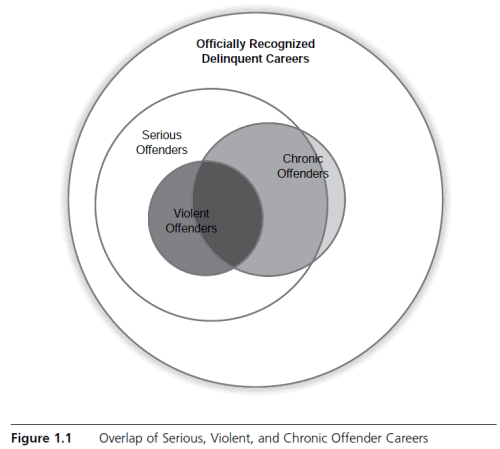 Figure 1.1 Overlap of Serious, Violent, and Chronic Offender CareersIn sum, about 18% of all careers included serious (but nonviolent) offenses, just 8% included violent offenses, and only 3% of the careers were serious, violent, and chronic. These are far smaller proportions among all delinquents than DiIulio imagined.
Figure 1.1 Overlap of Serious, Violent, and Chronic Offender CareersIn sum, about 18% of all careers included serious (but nonviolent) offenses, just 8% included violent offenses, and only 3% of the careers were serious, violent, and chronic. These are far smaller proportions among all delinquents than DiIulio imagined. Even given the overlap of the career types, less than a third (29%) of the chronic offenders were also violent offenders, only about a third (35%) of the serious offenders were also chronic offenders, and about half (53%) of the violent offenders were also chronic offenders.
Other Myths About Juvenile Delinquency
Myth 1: A juvenile violence epidemic occurred in the late 1980s and early 1990s.This is a questionable assertion. Public health scientists use the word epidemic to refer to particular health problems that affect numbers of the population above expected levels, but they do not specify what constitutes an “epidemic level.” The evidence does not necessarily support the conclusion that there was an epidemic of overall juvenile violence in the late 1980s and early 1990s; only the increase in homicides might be considered to have reached such a level. At the height of the so-called “juvenile violence epidemic” (in 1993), “only about 6% of all juvenile arrests were for violent crimes and less than one-tenth of one percent of their arrests were for homicides” (McCord et al., 2001, p. 33).
It can properly be said that a gun homicide epidemic occurred in the late 1980s and early 1990s, and juveniles were a part of this. From 1984 through 1993, the number of juveniles killed with firearms tripled, and the number of nonfirearm homicides remained nearly constant. However, the gun homicide epidemic was by no means limited to juveniles; the biggest absolute change was for young adults (Butts et al., 2002; Cook & Laub, 1998, p. 60).
The availability of guns was the predominant factor. From 1973 through 1994, the number of guns in private ownership in the United States rose by 87 million (Malcolm, 2002), to an estimated 200 million (Reich, Culross, & Behrman, 2002). The growing number of privately owned guns continued into the new millennium, and the latest estimate is 258 million privately owned firearms, of which 93 million are handguns (Wellford, Pepper, & Petrie, 2005). Approximately 4.5 million new (i.e., not previously owned) firearms are sold each year in the United States, including 2 million handguns (Hahn et al., 2005). The estimated total number of firearms transactions ranges from 7 to 9.5 million per year, of which between 47% and 64% are new firearms.
It can also be said that a gun suicide epidemic occurred in the 1980s and early 1990s. Just as gun homicides increased, so did gun suicides. Surprisingly, for each young person murdered, another commits suicide (Snyder & Sickmund, 1999). The rate of adolescent suicides involving firearms increased 39% from 1980 through 1994, whereas the rate of suicides not involving firearms remained nearly unchanged during this period (Snyder & Sickmund, 1999). More than 20,000 juveniles committed suicide between 1981 and 1998, almost as many as were victims of homicide during the same period (Snyder & Swahn, 2004). During this period, white juveniles ages 13–17 were more likely to kill themselves than to be killed by others. Thus it would be accurate to say that an adolescent gun suicide epidemic occurred at the same time as the adolescent gun homicide epidemic, particularly among young black males. Any explanation for the increase in adolescent gun homicides in the late 1980s and early 1990s must also account for the increase in adolescent gun suicides during that period. The emergence of “superpredators” is not a plausible explanation for both phenomena. Rather, the increased availability of guns and gang growth both occurred then (see Chapter 6).
Myth 2: Juveniles frequently carry guns and traffic in them.The increase in juvenile and young adult homicides from the mid-1980s through the mid-1990s prompted the U.S. Department of the Treasury to launch the Youth Crime Gun Interdiction Initiative (YCGII), which gathered valuable information on the ages of illegal gun carriers. Under the YCGII, the Bureau of Alcohol, Tobacco and Firearms in the Department of the Treasury supported 27 cities in developing systems that would allow them to trace all recovered crime guns. Surprisingly, nearly 9 out of 10 of the illegal guns recovered by police in the 27 cities in 1997–1998 were in the hands of adults (ages 18 and older); only 11% were recovered from juveniles (Bureau of Alcohol, Tobacco and Firearms, 1999). Nearly three times more recovered guns (32%) were in the hands of young adults, ages 18–24, than were in the hands of juveniles. Since then, federal gun interdiction initiatives have focused mainly on young adults.
Myth 3: Juvenile violence is the top crime problem in the United States.Actually, adult violence is our nation’s top crime problem. FBI data show that juveniles accounted for only 5% of the murders and only 12% of all serious violent crimes in the United States cleared by arrests in 2004 (Snyder, 2006). These figures are far below juveniles’ proportional representation (19%) in the age range of the total population that commits most crime (ages 10–49) (Snyder & Sickmund, 1999). Young adult offenders ages 18–24 have the highest violent crime arrest rates (Cook & Laub, 1998), and the overwhelming majority of gun homicides and gun assaults in the United States involve adult perpetrators and victims (Cook & Ludwig, 2001).Myth 4: Juveniles were the driving force behind the increase in violence in the United States from the mid-1980s through the early 1990s.In reality, studies conducted by researchers at the National Center for Juvenile Justice have shown that adults, not juveniles, accounted for two-thirds of the increase in murders in the late 1980s and early 1990s, and those adults were responsible for nearly three-fourths of the increase in violent crime arrests during this period (Snyder, Sickmund, & Poe-Yamagata, 1996). Murders increased 23% from 1985 through 1994 (Snyder et al., 1996, p. 20). If murders by juveniles had remained constant over this period, murders in the United States would have increased by 15%.
Myth 5: School shootings represent a second wave of the juvenile violence that doomsday forecasters Fox and DiIulio prophesied.School shooters do not fit the profile of mythical superpredators—or any other high-risk youth profile, for that matter. It is important to recognize that student school shooters represent only a fraction of all mass killers, a group that is overwhelmingly made up of adults (Fessenden, 2000). All types of rampage shootings increased in the 1980s and 1990s, corresponding with increased production of semiautomatic pistols (Fessenden, 2000). The extent of the panic over school shootings (see Chapter 2) is evident when one contrasts the reality of this form of violence with public perceptions of the problem. School crime did not increase in the early 1990s and has dropped since then (Brooks, Schiraldi, & Ziedenberg, 2001; Snyder & Sickmund, 1999). In fact, school-associated violent deaths dropped 40% at the end of the 1990s, and the chance that a school-aged child would die in a school was 1 in 2 million (Brooks et al., 2001). Yet 71% of people responding to a public poll in 1998 said that they thought a school shooting was likely to happen in their community. Actually, violent events in schools have declined significantly for more than a decade, at least up to 2005 (National Center for Education Statistics, 2007).
Myth 6: Juvenile offenders are committing more and more violent crimes at younger ages.The federal Office of Juvenile Justice and Delinquency Prevention (OJJDP) Study Group on Very Young Offenders concluded that there is no empirical evidence to support this claim (Loeber & Farrington, 2001a; see also Butts & Snyder, 1997; Snyder, 1998). The proportion of all juvenile violent arrests involving children ages 10–12 remained essentially constant in the 1980s and 1990s (Snyder & Sickmund, 1999, p. 121). Just 1% of all juvenile arrests involved youth under age 10 in 2004 (Snyder, 2001, 2006).
A comparison of national self-report studies showed that the proportion of child delinquents involved in serious and violent delinquency did not change from 1976 through 1999 (Espiritu, Huizinga, Crawford, & Loeber, 2001). Yet the number of arrested child delinquents increased from 1980 through 1996 (Snyder, 2001), and law enforcement agencies referred a larger percentage of the child delinquents they arrested to the juvenile courts in 1997 than in 1988. Thus child delinquents came to constitute a large proportion (10%) of all juvenile cases by the late 1990s (Butts & Snyder, 1997; Snyder, 2001).
To resolve the “superpredator” issue, the OJJDP, in the U.S. Department of Justice, undertook a program of research to determine the size and characteristics of the worst juvenile offenders, which was spearheaded by Snyder’s 1998 Maricopa County study described in Chapter 5. Snyder used that database to examine three key claims about juvenile violence that had been tied to the superpredator myth:
• That the relative proportion of serious and violent offenders among all juvenile delinquents is growing
• That juvenile offenders are becoming younger
• That juveniles are committing more and more violent crimes
None of these assumptions proved to be correct. An Arizona study (Snyder, 1998) showed that the proportion of chronic offender careers increased by only 4% from the 1980s to the 1990s. Moreover, the worst offenders in the latter period were not significantly more active, more serious, or more violent. Second, there was no evidence that the juveniles in his study were beginning their court careers at younger ages. Third, no increase was found in the numbers of crimes for which serious and violent offenders were charged.
Rather, Snyder found that the juvenile justice system may be spreading its net wider, bringing in more juveniles, not more serious juvenile offenders. Other research shows that the proportion of children under 13 involved in delinquency has not changed much over the past two decades (Espiritu et al., 2001).
Myth 7: The juvenile justice system in the United States is a failure; it is collapsing because it cannot handle today’s more serious offenders.
In the midst of the moral panic over delinquency, such unusually critical statements were made about the juvenile courts—including charges that they are “kiddie courts,” too lenient, and quaint, and that probation is a farce (Butterfield, 1997)—that some critics proposed scrapping them altogether (see Chapter 12). The notion that the juvenile justice system has become ineffective is based on the following three assumptions (Tracy & Kempf-Leonard, 1998):
• Sanctions in juvenile courts are neither certain enough nor severe enough to deter serious delinquents from continually committing serious crimes.
• The rehabilitative techniques used by juvenile courts have not sufficiently reduced recidivism (i.e., returning to criminal activity).
• The preponderance of noncustodial sanctions (such as probation) and the very short institutional sanctions that are applied allow delinquents to pose a continued and severe risk to public safety.
These and other related myths about the juvenile justice system are discussed next.
DiIulio’s preposterous claims left no plausible role for the juvenile justice system in stemming the coming tide of superpredators. The juveniles who achieved this mythical status were said to be beyond redemption; jailing and imprisonment was the presumed answer. Just desert advocates promoted the use of punitive laws, policies, and practices in the juvenile justice system, including three-strike laws, determinate sentences, longer sentences, sentencing to boot camps, electronic monitoring, drug testing, shock incarceration, and other punitive measures (Howell, 2003b). Such policies and practices, which deemphasize prevention of juvenile crime and rehabilitation of juvenile offenders, became common in the juvenile justice system through new state legislation. Together, DiIulio’s superpredator concept and just desert principles spawned a major myth that the juvenile justice system could not be effective with the new breed of juvenile offenders and was no longer relevant in modern-day crime control (Box 1.2).Hillary Clinton has a complicated history with incarceration. As first lady, she championed efforts to get tough on crime.“We need more police, we need more and tougher prison sentences for repeat offenders,” Clinton said in 1994. “The ‘three strikes and you’re out’ for violent offenders has to be part of the plan. We need more prisons to keep violent offenders for as long as it takes to keep them off the streets,” she added.
-- Private Prison Lobbyists Are Raising Cash for Hillary Clinton, by Lee Fang
IN FOCUS 1.2: The Logic of DiIulio’s Superpredator Prediction
• The Philadelphia Birth Cohort Study found that 6% of the boys in the study sample were chronic offenders (Wolfgang, Figlio, & Sellin, 1972).
• From 1996 through 2010, the number of boys under age 18 would increase by a total of 4.5 million (from 32 million to 36.5 million).
• Therefore, by 2010, the United States would have 270,000 (.06 × 4.5 million) more superpredators (chronic offenders) who would perpetrate a “coming wave of teen violence.”
SOURCE: DiIulio (1995b).
Myths About the Juvenile Justice System (JJS)
JJS Myth 1: Rehabilitation is no longer a priority in the juvenile justice system; punishment is now favored.Declarations that the rehabilitative mission of the juvenile justice system is in serious decline, if not dead, are common (Box 1.3). Many state legislatures did indeed rewrite their juvenile codes to endorse punitive objectives (Torbet & Szymanski, 1998); however, 45 of them maintained an allegiance to the juvenile justice system’s traditional benevolent mission (Bishop, 2006). In fact, Bishop noticed in her review of the past 3 years (2003–2005) of legislative actions that “efforts are underway to mitigate or even abandon punitive features [of juvenile laws enacted in the past decade and] to address the treatment needs of most juvenile offenders” (p. 660).
IN FOCUS 1.3: Claims That the Juvenile Justice System Fails to Meet Expectations
“Politicians and the public have repudiated the [juvenile] court’s original rehabilitative premises” (Feld, 1993).
“[The system is] unable to stem the tide of declining public support” (Bazemore & Umbreit, 1997, p. 5).
“In many jurisdictions [the juvenile justice system] does not consistently serve the public safety, hold juveniles accountable, or meet the treatment and rehabilitation needs of each juvenile offender” (Bilchik, 1998, p. 1).
“The voices calling for the abolition of the juvenile court are no longer falling on deaf ears, but are beginning to capture the attention of state and nationally elected public officials, the media, and other opinion leaders” (Schwartz, Weiner, & Enosh, 1998, p. 534).
“Demands for an overhaul of the juvenile justice system continue to be commonplace at the national, State, and local levels” (Hsia & Beyer, 2000, p. 1). “The original purpose of the juvenile court has systematically unraveled” (Garascia, 2005, p. 489).
JJS Myth 2: The public no longer supports rehabilitation of juvenile offenders.Others say that the efforts of “child savers” are all for naught anyway because of a lack of public support for rehabilitation of juvenile offenders (Box 1.4). These observers assume that the impact of the just desert movement on the adult criminal justice system—in greatly diminishing the use of treatment programs—has filtered down to the juvenile justice system. Is this a matter of fact? Decidedly not. “The notion that the American public is opposed to the treatment of juvenile offenders is a myth” (Cullen, 2006, p. 665). Cullen notes that a 2001 national survey found that 80% of the sample of adults thought that rehabilitation should be the goal of juvenile correctional facilities and that more than 9 in 10 favored a variety of early intervention programs, including parent training, Head Start, and after-school programs. “The legitimacy of the rehabilitative ideal—especially as applied to youthful offenders—appears to be deeply woven into the fabric of American culture” (p. 666). Therefore, it is not surprising that state and local juvenile justice officials have taken steps to soften the impact of punitive reforms (Bishop, 2006; Mears, 2002).IN FOCUS 1.4: Key Myths About Juvenile Delinquency
• A juvenile violence “epidemic” occurred in the late 1980s and early 1990s.
• Juvenile violence is the top crime problem in the United States.
• Juveniles were the driving force behind the increase in violence in the United States from the mid-1980s through the early 1990s.
• Juvenile offenders are committing more and more violent crimes at younger ages.
• School shootings represent a second wave of the juvenile violence that doomsday forecasters Fox and DiIulio prophesied.
• The juvenile justice system in the United States is a failure; it is collapsing because it cannot handle today’s more serious offenders.
• The public no longer supports rehabilitation of juvenile offenders.
• Rehabilitation is no longer a priority in the juvenile justice system; punishment is now favored.
• Transferring juveniles to the criminal justice system is the way to reduce juvenile delinquency.
JJS Myth 3: Juvenile correctional systems are a dismal failure.Whether confinement in juvenile reformatories halts or accelerates juvenile criminal behavior is a question that has been debated since the mid- 19th century (Krisberg & Howell, 1998). For the first time, reasonably good data are available that provide a rough approximation of recidivism rates among offenders released from state juvenile correctional facilities (Virginia Department of Juvenile Justice, 2005). The gathered state reports were not uniform. Some measured recidivism by rearrests (9 states), others used reconvictions (12 states), and the final group used reincarceration (12 states). A total of 33 states provided data, so there is overlap in the formats in which data were reported (but only 4 states reported recidivism data using all three measures). The average recidivism rates were as follows: rearrests (57%), reconvictions (33%), and reincarceration (20%).
These averages appear to be far better than juvenile justice system critics have assumed and also much better than comparable measures for the criminal justice system: Two-thirds (67%) of released prisoners are rearrested within 3 years, and more than half of released inmates are returned to prison (Langan & Levin, 2002). Actually, the adult recidivism rates should be lower than those for juveniles because adolescents are on the upward side of the age–crime curve and adults are on the downward side, already in a desistance mode.
JJS Myth 4: Transferring juveniles to the criminal justice system is the way to reduce juvenile delinquency.DiIulio said “by my estimate, we will probably need to incarcerate at least 150,000 juvenile criminals in the years just ahead” (DiIulio, 1995b, p. 28). In one fell swoop, DiIulio dismissed the relevance of the juvenile justice system. But it already had been dealt a serious blow from the just desert movement (specific and extreme punishments for crimes), which I will discuss in more detail in the next chapter.However, as we shall see in Chapter 12, studies have shown that juveniles who are transferred to criminal court and placed in adult prisons are actually more likely to recidivate than juveniles retained in the juvenile justice system, and their recidivism rates, offense rates, and offense severity appear to increase after they are released from prison. Nevertheless, many research questions about transfers remain to be answered (Mears, 2003). Equally important, the business of transferring juveniles to another system not designed for them presents myriad complex matters that rarely are considered (Mears, 2000).
The unifying theme in these four myths is the notion that punishment is now predominant in juvenile justice policies and practices, driven by shifting public opinion. However, Bishop (2006) astutely observes that “to the public, the idea of punishment versus rehabilitation is a false dichotomy” (p. 656) and that “we have sold the public short for a long time regarding the degree to which it supports the rehabilitation of juvenile offenders” (p. 656). The reality, she says, is that the public endorses both strategies simultaneously. Indeed, Bishop sees that the public embraces a balanced approach of punishment for offenses while also providing the necessary treatment to help offending youth move on into adulthood with their life chances intact. This is the essence of effective juvenile justice system philosophy, a concept that politicians and legislators appear to have difficulty grasping.RecapThe most damaging and erroneous myth propagated in the 100-year history of the juvenile justice system in the United States is that concerning the emergence of a new breed of juvenile offenders called “superpredators.” Observers have linked this mythical image with forecast increases in the size of the juvenile population. DiIulio reportedly now regrets using the term, and Wilson has acknowledged that he was wrong in making the erroneous forecast. But their misgivings came too late. Frightening images of “waves of violent adolescents coming at us over the next decade,” producing a “bloodbath,” had already been presented over and over by the broadcast media.
Other myths about juvenile violence fit well with the superpredator myth and the myth of an epidemic of juvenile violence, such as the myth that juvenile offenders are committing more and more violent crimes at younger ages and the myth that the juvenile justice system lacks the capacity to deal effectively with the new breed of superpredators and the coming juvenile violence epidemic. Such myths have led to a perception of juvenile delinquency as equivalent to adult crime, and some observers have come to believe that turning juvenile offenders over to the criminal justice system is a solution. This has proved to be a flawed policy, however.
The current state of juvenile justice has nothing to do with superpredators or new waves of violent juvenile offenders, as DiIulio, Fox, and Wilson have suggested. Rather, the erroneous perceptions of these observers have contributed to a moral panic over juvenile delinquency that has led to a problem of overload in the juvenile justice system; I turn to this topic in Chapter 2.
Discussion Topics1. Why are myths about juvenile delinquency developed?
2. What are the essential ingredients for sustaining them?
3. What is the most believable myth? Most unbelievable?
4. Try to come up with your own myth about juvenile delinquency and develop a plan for promoting it.
5. How can such myths be stopped?




